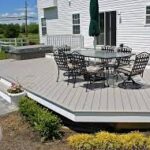You’ll be able to discuss the present condition of architecture in New York by talking about a geologic event that happened between 150 and 200 million years back: an excellent geologic uplift, referred to as Cape Fear Arch, pressed what’s now New York upwards hundreds of ft. The arch also elevated the ocean floor, which in fact had once been became a member of with South Usa, and also the waves created with this change produced the Outer Banks, a series of barrier islands which are farther offshore compared to every other area of the Atlantic Seaboard. Consequently, New York has shallow rivers and just one major harbor in the mouth from the Cape Fear River, that is made treacherous by offshore shoals. Shifting river patterns brought on by the Cape Fear Arch, which keeps rising, remove topsoil this provides you with New York poorer soils compared to surrounding regions. The possible lack of rivers for transport, inaccessible harbors and poor soils resulted in early settlements in New York were modest. For a lot of its history, New York would be a land of small landowners, its population scattered across an enormous landscape.
Though we’ve end up being the tenth largest condition in america, our spread settlement pattern persists even today. Which dispersal has produced among North Carolinians a spirit of independence that’s individualistic, self-sufficient, ingenious, and proud. When we tight on wealth, we’ve less pretense. A lengthy good reputation for dwelling apart may also engender a those who are careful of the neighbors, self-righteous, and also at occasions dour. I have faith that each one of these characteristics are available in the architecture of New York, not just in yesteryear but additionally in our.
Today a metropolitan crescent nearly 200 miles lengthy straddles the Cape Fear Arch along Interstate 85, from Charlotte now to Raleigh, a metropolitan blueberry-like farm where, as every proud Carolinian will explain, there’s chardonnay on every table, NPR in each and every vehicle, and enough digital progress to create, otherwise a Plastic Valley, a plastic Piedmont. Parallel for this strip, that is about eight miles wide, there lies a mature New York, a quieter place where a large number of small frame houses, vegetable gardens and barns rest within the countryside. During these places you’ll be able to see an architecture of plain living produced by hard-employees not against wealth although not pleased with opulence either. In my opinion there’s an uncommon beauty here, portrayed within the works of art of Sarah Blakeslee, Francis Speight, Maud Gatewood, and Gregory Ivy, as well as in the pictures of Bayard Wooten.
The variety of plant and animal existence in New York is yet another legacy from the Cape Fear Arch. Six fully distinct environmental zones span the condition, in the sub-tropics from the coast towards the Proto-Canadian climate from the greatest mountain tops east from the Mississippi. Today our architecture trends towards sameness across this tapestry of plants and climate, but it wasn’t always so. To some degree that appears outstanding now, the first settlement pattern of New York informs an individual story of ordinary structures near to the land, as varied because the hills and seaside plains which they stand.






